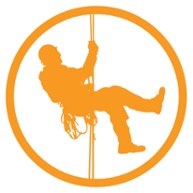TACS Chapter 3: Levels of Qualification
Hey Technicians! So, if you're thinking about becoming an IRATA technician, here is a breakdown of what your IRATA journey will look like! There are three levels or grades that you can achieve. Check out the flow chart below to get a more visual look of the certification road map.
Level 1
As a level 1, you'll be working under the direct supervision of a L3 Supervisor. As part of a rope access team, you'll be able to understand and follow the rope access procedures, method statements and associated risk assessments at each work site. Personally, you'll understand how to use, inspect, and maintain your own rope access equipment; be able to assist in rigging; and be able to perform a simple rescue when descending down your ropes.
Level 2
As a level 2, you'll have at least a year's worth of experience and 1000 hours logged on rope! With a bit more experience, you can now perform more complex tasks under the supervision of a Level 3 rope access safety supervisor such as more complex rigging, including re-belays, deviations and tension lines; perform rescues from a variety of situations; and assemble and implement hauling systems.
Level 3
As a level 3, you'll have at least two years worth of experience and 2000 hours logged on rope! As a more experienced rope access technician, you will be responsible for understanding and implementing the rope access procedures, method statements and associated risk assessments, for the rope access team that you are leading. You'll understand the elements and principles of IRATA International’s safe system of work; is knowledgeable with relevant work techniques and legislation; have an extensive knowledge of advanced rope access rigging and rescue techniques; and possess a current first-aid certificate. As a Level 3, you can become a rope access safety supervisor: see ICOP Part 2, 2.6.2.
So how do you advance? Check out our flowchart and the come train with us at Pacific Ropes!
Check out our Training Page!

